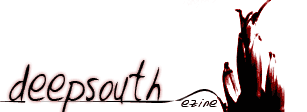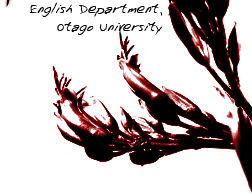From lyric solipsism to epic immanence via the power of metaphor: the religious imagination of Dylan Thomas
Marcel Fernandes
Dylan Thomas is often seen through the stereotype of the romantic bard, yet this masks the epistemological rigour and the density of meaning of his verse, qualities that are attributed to more ostentatiously cerebral poets. For Thomas, the cosmos must be understood through the senses because only they provide immediate and unmediated access to reality despite the illusions they may create. This is not irrational sensualism, however, but a sublime recognition of the limits of man, of the necessity of Protagoras’ dictum that “man is the measure of all things”: the body is the ultimate substrate for any deep (or at least human) understanding of the universe. This underlying premise is paradoxically liberating despite its limitations, in much the way that Kant defined the sublime: through the shattering awareness of the puniness of man in the face of the infinite the feeling of sublime is reached; this humbling awareness of our very weakness nevertheless shows that as humans we can at least conceptually grasp the infinite. However, while Kant understood the sublime within a traditional Christian transcendental context, Thomas applies it to a more immanent, pantheistic religious vision: despite our impotence we can realise that we are a physical part of the infinite divine being that is the universe. Thomas’s sensual epistemology escapes solipsism through this awareness of immanence which demolishes any distinction between the ego and the world; yet this awareness is itself the fruit of expanding the body into the cosmos through the vastness of his metaphors. The understanding of the universe through the pulse finds a natural formal corollary in the primacy of sound in his poetry: the movement of the wind in the throat is the essence of his poetry, and he decried the “lack of aural value”(1)in much 20th-century verse.
Thomas is able to viscerally confront the great abstract exigencies of human existence, death and time, by making them both concrete in their relation to the body and yet universal through the expansion (and thus dispersion) of the lyric self into the whole cosmos. This maximalization is attained by vast metaphors that are themselves more like immanent governing forces in the poems rather than being discrete or directly expressed tropes. Once they are grasped however, the apparent difficulty of Thomas’s verse evaporates, leaving a lucid simplicity. For instance, death and birth are viewed as two aspects of the same process, so that the more inscrutable aspects of death are implicitly figured through the description of growth and maturation. In ‘From Love’s First Fever To Her Plague’, birth and death are simply the exit from and re-entry into the underlying primal unity of the cosmos. In the first stanza Thomas clearly expresses the necessary monistic aspect of a naturalistic pantheism:
All world was one, one windy nothing,
My world was christened in a stream of milk.
And earth and sky were as one airy hill,
The sun and moon shed one white light.
(1) Ackerman (87), from ‘Book Review’ by Thomas, Adelphi, vol. viii, September 1934.
page 1 2 3 4

